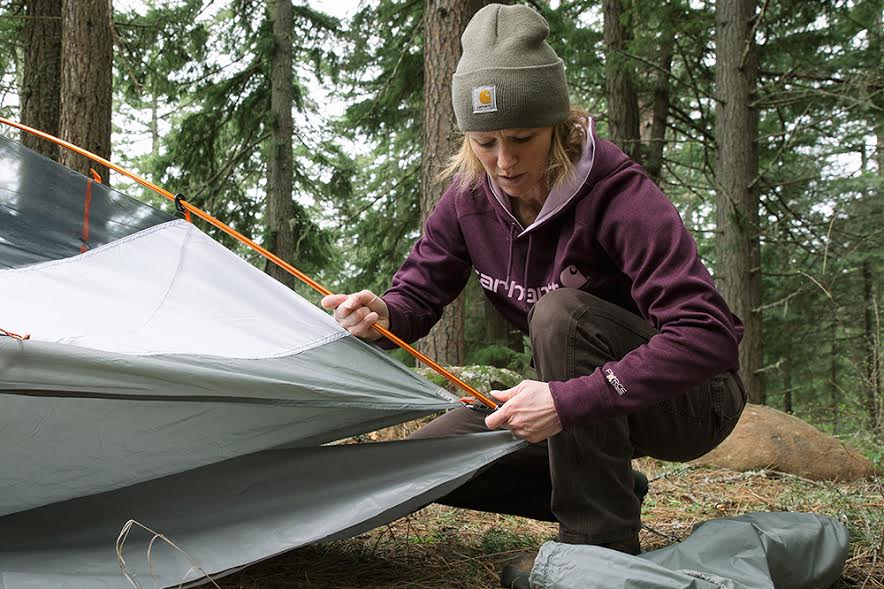How to Pitch a Tent and other Esential Camping Tips
Pitching a tent is a great way to dip your toe into outdoor living, but before you get engulfed in a sea of nylon, do some scouting. Make sure that your site is free of hazards like broken trees and fallen limbs (which might signal a tree getting ready to fall). Other things to watch out for are beehives and wasp nests. Oh, and keep an eye out for animal droppings. It’s best to avoid areas that are well-traveled by woodland creatures. Also, keep in mind the wind direction, and try to make camp upwind of other campers whenever possible to avoid catching the smoke from their fires.
Once you find a suitable space, clear a flat area and get rid of any debris or trash. Unpack your tent and organize all the components.
Next, lay a ground cloth over your campsite, open your tent and begin inserting the poles into the frame. Now it’s time to raise the tent. Once you’ve hammered in the tent pegs, set up the rainfly and you’re ready to move in! An old area rug is a great base layer inside the tent. It’ll catch dirt particles, and it’s super comfortable under tired feet.
It’s a good rule to keep the inside of your tent clean. Take off your shoes before going inside. This will help with breakdown and storage later. You should take apart your tent the same way as you assembled it, making sure to keep everything organized and stored properly. This will prolong the life of your tent, saving time and money.
Camping Essentials
In addition to pitching your tent, here are a few essential tips that will make your camping trip go more smoothly.
- Before you take your tent out to the wilderness, do a test run in your backyard. Make sure you’ve got your tent pitching skills honed!
- Before you pack up the car and head out for your trip, reserve your campsite well in advance. Most places have a reservation system to make booking a campsite convenient.
- Consult a trusted outfitter like Carhartt to be sure you have all the durable apparel you need to explore the wilderness.
- Another important aspect of camping is the fire. Keep some cotton balls smeared with petroleum jelly in a zip-storage bag for an easy fire starter. Dryer lint stuffed into a toilet paper roll is also a great option for a quick start. Educate yourself and your kids on fire safety and make sure everybody is clear on how to stay safe around fire.
- Eating is a big part of camping. Aside from the s’mores, it’s good to collect some go-to recipes that spell out some easy meals for your camping trip. Look for meals that can be prepared ahead and find recipes that call for canned food. Some good utensils and a cast iron skillet will go a long way. Another important food tip is to properly store away your food beyond the reach of hungry animals that might capitalize on a free meal.
- Use block ice. It lasts much longer than crushed or cubed ice, and your food and drinks will thank you for it.
- Keep your food and utensils organized. This will save time during the trip and also make for an easier cleanup and trip back home.
- Take along some durable water bottles, water bladders and water purifying tablets.
- Don’t forget to bring a few comforts from home like battery powered speakers, good coffee, an air mattress and a good pillow.
- Plan your storage by bringing some container and compression bags to save space.
- Plan for activities for the kids! Camping doesn’t have to be a bore for the little ones.
Comments
There are 0 comments on this post












